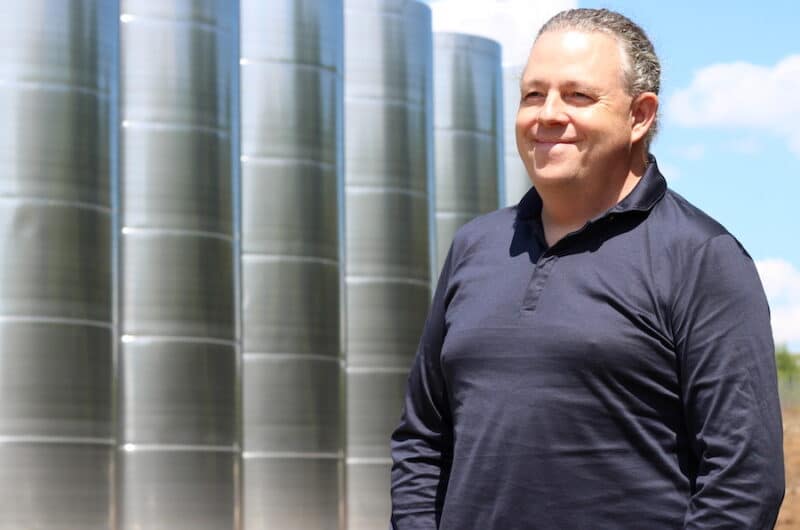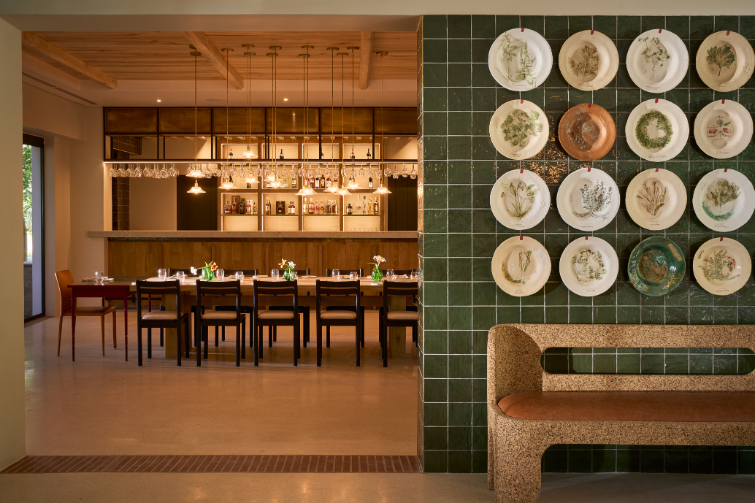Philip Cox, co-owner of Romanian winery Cramele Recas, wants to change the perception of rPET packaged wines to help reduce the wine industry’s CO2 emissions.
The Romanian winemaker is launching an innovative project to introduce the first wine bottles made entirely from recycled plastic recovered from the Danube. He intends to change perceptions about sustainable packaging and create a more sustainable future.
Inspiration
The initiative was inspired by two things, Philip explains. “We’re undertaking our carbon neutral certification right now and found out that glass is the biggest source of CO2 emissions in our production process, and as the weather has been increasingly giving us severe problems like drought, hail, excessive rain at the wrong time. We think its hypocritical to blame climate change for our problems and not to try and do something about it!”
Philip’s second motivation was his dissatisfaction with the glass industry. Things came to a head in 2022, with prices doubling within a year, changing often at random and unannounced. The frequent increases, coupled with erratic and poor availability, told him the glass industry was not investing in matching production with demand.
“Frankly, they’re not interested in the wine industry at all, and prefer to blackmail us to raise prices as much as they can, while concentrating on building volumes with the soft drinks, beer and food container business.”
It was also difficult to procure lightweight glass bottles and obtain the quantities he needed. “It seemed to be time to try and really push for alternative, future-proof and ecological packaging.”

Richtig Lecker, a Cabernet Sauvignon from Cramele Recas in 100% recycled plastic packaging.
A blue Danube
To tackle these problems, Cramele Recas developed a new wine bottle made from recycled plastic. The wine, ‘Richtig Lecker’, is made from 100% Cabernet Sauvignon grapes grown in Romania, will now be bottled in 100% reclaimed PET (rPET) from the Danube – Europe’s longest and most polluted river. The river currently transports approximately 1 500 tonnes of PET plastic into the Black Sea every year.
“The Danube is the closest river to us and fairly well known, but our plastics supplier is recycling plastic from many rivers, beaches on the Black Sea and Mediterranean sea.”
The technology isn’t entirely new. Plastipak is already a large supplier to the beer, milk and soft drinks industry. What’s new is a new multibarrier material that lines the walls of the bottle to keep oxygen out, which extends the wine’s lifespan with at least two years. “This was not previously possible,” says Philip. “As 90% of wine is drunk within the first month after purchase, so we think this technology covers the needs of the vast majority of wines.”

Philip Cox, co-owner of Romanian winery Cramele Recas.
Glass ceiling
The problems of glass production are well known in the wine industry. It requires massive, capital-intensive factories – an investment of at least 100 million euro, says Philip. They are also very inefficient and inflexible, since they cannot stop and start as the market demands.
“Glass factories are unable to easily change between different bottle types shapes and colours. And the factories consume astronomical amounts of energy, since they need their furnaces to be kept molten permanently at around 1500 °C, from the moment they are started up until they close; if they cool down, they solidify and have to be demolished and re-built.”
Apart from having to keep producing 24 hours per day, 365 days per year, glass is also heavy, dangerous to handle, expensive and energy intensive to transport and even to recycle. In short, glass is a polluting, high CO2-emitting material.
“At the production phase, glass produces three to four times more CO2 emissions than recycled PET, which melts at 250 °C and can be made in much smaller batches in any size or shape, and even made on site at the bottler – saving on additional transport and storage,” says Philip.
“When you take into account the whole lifecycle of glass bottles – transport from factory to winery, winery to market, to the final consumer, and then on to disposal/recycling, the CO2 emissions are considerably higher – around 8-10 times more for glass than plastic.”

Cramele Recas winemaker Nora Iriate.
Real savings
“Plastic is around €6-8 cents per bottle cheaper to purchase than glass, and on a typical journey from our winery to a market for example in the UK, PET saves a further €4-6 cent per bottle in transport costs (around 30%) since we can load 30% more bottles in a truck/40 ft container.
“This is because on glass, all containers and trucks are never fully loaded due to road weight limits. The maximum load weight which can be carried is usually 25 tonnes, which for glass means around 20 000 regular bottles, but for recycled PET over 33 000 bottles can fit in a 40 ft container. Again saving both CO2 emissions from fuel, and saving money.”
Philip thinks PET is also of interest to other areas of the wine value chain where weight and safety aspects are important, such as airlines, wine festivals, sporting events, and online wine sales, which generate lots of protective packaging and massive CO2 footprint when sending wine via courier, none of which is needed with PET.
“At least 40% of a winery’s CO2 footprint comes from glass bottles, and it is by far the biggest source of CO2 emissions from wineries.”
PET bottles can also easily be used on existing bottling lines (important from a winery adoption and start-up cost point of view), and look very similar to glass bottles. “Actually, they are pretty much unique among alternative packaging available right now, in that they look very similar to glass, and thus we think consumer acceptance will be helped by this. We’re not trying to sell something completely off the beaten track.”
A sense of urgency
While there has been significant push-back against plastic, few have also emphasised the downsides of glass. In both cases, if the bottles aren’t disposed of responsibly and recycled, the result is bad for the environment.
“The only difference is that glass doesn’t float and is not as visible on beaches, in rivers and so on. But in the case of glass, the environmental impact is almost as bad even when it is recycled properly – which is not the case with plastic to the same degree (i.e. glass is heavy and uses a lot of energy to transport to the recycling plant, and to be crushed, sorted and then re-melted.)”
“Properly recycled pet is better for the environment than all types of glass, particularly as we’re using material that has already been pulled out of the environment one time already and thus from the beginning is not making the situation any worse.
“It will take time to communicate that, but we’re really suffering from climate change, as I am sure is also happening in many wine regions including South Africa. We need to do something – and quick.
“Nobody else is going to do it for us. I do not believe in carbon offsetting, tree planting and so forth, as these are all long-term solutions. We need to make a difference now and reduce our CO2 output, or in our children’s lifetime we won’t be able to grow grapes at all in Romania.
The future
Cramele Recas is expanding and there’s no doubting its growing popularity. “We’re plating more vineyards to add to the 1 250 hectares we already have, building new wineries, and adding more solar panels to our winery to increase our own energy production to 75% of our consumption.
“We just changed half our fleet of cars to electric models, and right now I am just in the middle of buying a new high-end bottling line to keep up with demand.”
For the curious, Cramele Recas has a wine on local shelves called Lautarul Pinot Noir which is available at selected retailers. “It’s sold via our Dutch importer, so I am not 100% sure of where it’s available, but it’s been selling there for a few years now and doing pretty well, considering South Africa is one of the greatest wine producing countries in the world.”
Romania is roughly tenth in the world for vineyard area, with 190 000 hectares. Many vineyards are quite old and yields are small, which means Romania is only around 12th position for wine production – averaging between 4 and 5 million hectolitres per year.













